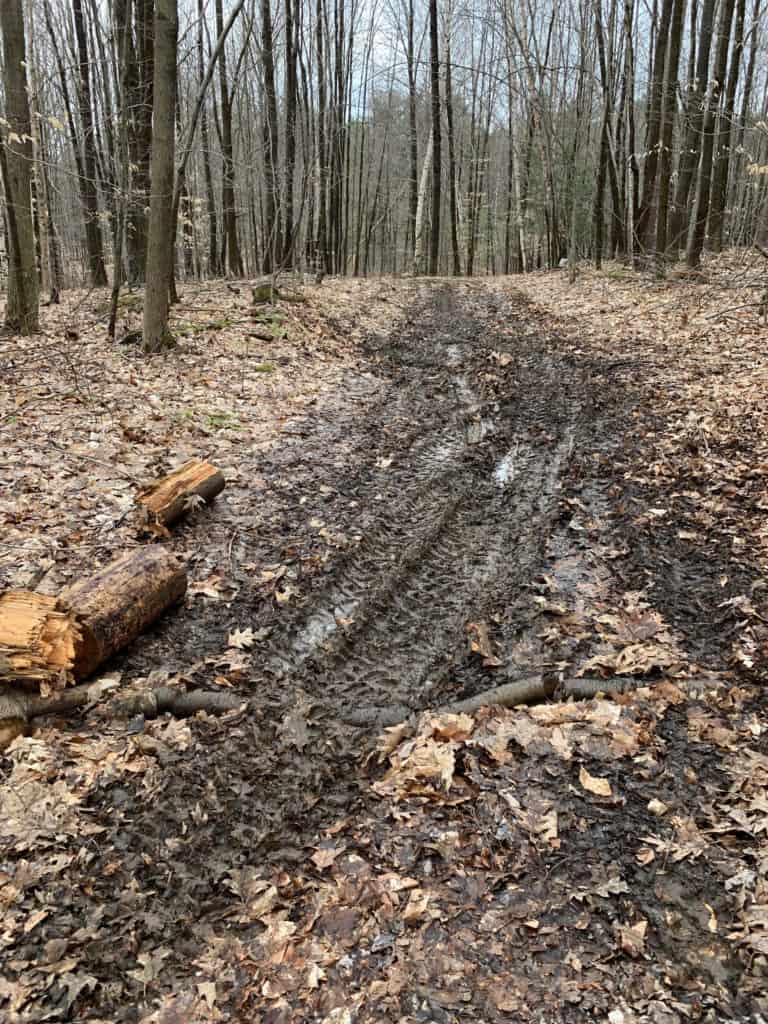
When the snow starts melting and the temperatures get warmer, most of us want to get outside and hike! But, mud season is not a good time for hiking in certain areas. Rain and melting snow at higher elevations are keeping many of Vermont’s hiking trails wet and muddy. When hikers tramp on saturated soils, they cause soil compaction and erosion as well as damage to the trail and surrounding vegetation. Please help protect the fragile trails this time of year by staying off muddy trails.
Higher elevation soils take longer to dry out. And after heavy snowfall this winter and following spring rains, the trails will take longer than normal to dry out. A trail may be dry at the trailhead, but is muddy at a higher elevation this time of year. If you notice this happening, please turn around! Trails at lower elevations, dirt roads, and recreation paths provide excellent places for early spring walking.
Along with the warmer weather, there are many aspects of nature beginning to emerge for us to enjoy. Thank you for helping to preserve our beautiful natural resources!
Guidelines to follow when hiking this time of year
If a trail is so muddy that you need to walk on the vegetation beside it, turn back and seek another place to hike.
Plan spring hikes in hardwood forests at lower elevations.
Avoid spruce-fir (conifer) forest at higher elevations and on north slopes before late May and from the end of October until frozen or snow covered.
Camels Hump and Mt Mansfield trails are closed from April 15 through the Friday of Memorial Day Weekend. Please do not hike here. Stay below 3,000 feet during these times of year.
Staying away from certain places during mud season makes them ready to enjoy this summer.
For more information, and other mud season hiking options, check out greenmountainclub.org/mud-season-arrived.




